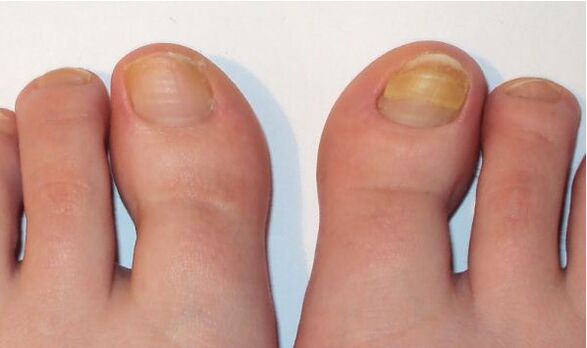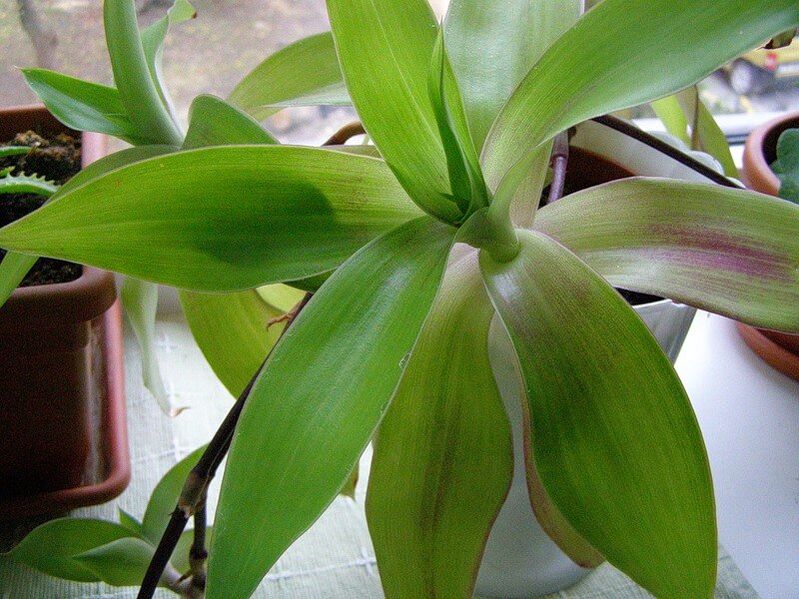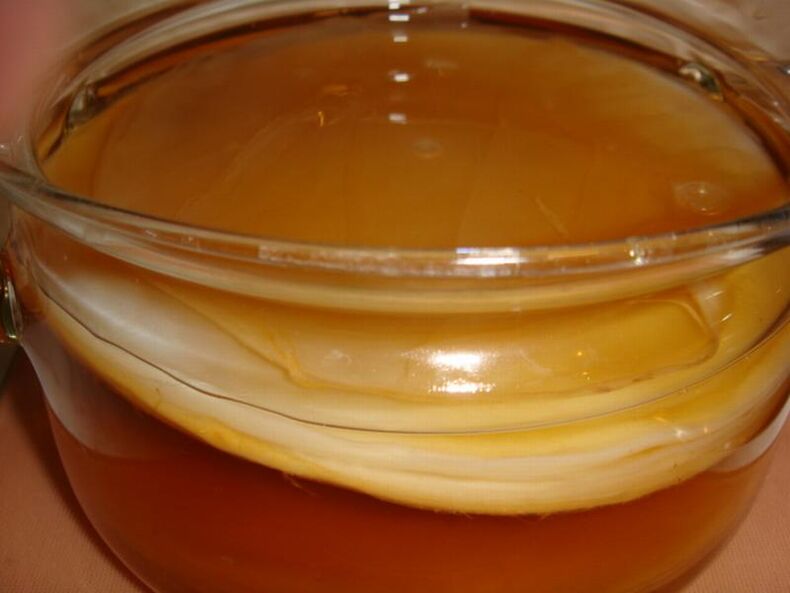Toenail fungus (onychomycosis) is a collective disease that can spread easily in unsanitary conditions, in public places, and can also lead to excessive sweating of the feet from wearing poor-quality shoes. If personal and general hygiene rules are not followed, onychomycosis can quickly affect the toenails and must then undergo lengthy and expensive treatments that do not always guarantee complete remission of the disease.

How to Identify Fungi
Sometimes a person does not appreciate the fact that the nails have changed color, structure, become brittle or vice versa thick and hard. Also, the primary symptoms of onychomycosis are not obvious, although at this stage, treatment can still help resolve the problem quickly.
Treatment should be started immediately if the following symptoms are detected:
- Inconspicuous streaks, dots, or white spots on the nails;
- Nails lose their natural luster and develop cloudy, whitish or brown areas;
- nail plate layering;
- Inflammation of the skin adjacent to the affected nail.
The characteristic symptoms of onychomycosis are itching, burning, dryness, and peeling. If you notice at least two or three of these signs, it's time to start treatment.
Effective Traditional Medicine
For the treatment of nail fungus, various methods are used - from drugs and chemicals sold for free in pharmacies to medicinal plants. Often, you have to try different methods or combine several of them to get positive results. The main problem with this treatment is not to stop and end the course, as untreated onychomycosis often manifests itself in the form of relapses and leads to the failure of new healthy nails.
Available Medications and Remedies
There are some makeshift antifungals in every apartment closet or first aid kit that are effective. These remedies include regular iodine, which is constantly rubbed into the affected nails and you can quickly and completely cure the disease, but only in the first stage of onychomycosis.
The standard course of treatment with iodine involves daily use of a 5% solution that must be applied to the nails twice a day (morning and bedtime) for a month. After a few weeks of treatment, you may feel pain in the skin around the affected nail, but this is not a chemical burn, but a sign that the healing process has begun.
An alternative to iodine is a strong solution of potassium permanganate. This remedy, diluted 1: 1 with water, is also rubbed into diseased nails at the same frequency, and you can see better changes after the first week.
Hydrogen peroxide is considered a milder drug: a cotton pad soaked in this drug must be applied to the sore nail so that the compress can be easily secured by putting on a sock. If you wear your shoes a lot (for example, at work), you must change the disc twice a day. This will soften the affected nail and then easily remove the diseased part and area.
Popular folk antifungals are soda water and propolis, which can be used in a variety of ways.
- soda. Add baking soda to a bowl of hot water at a rate of one tablespoon per three liters of boiling water. After steaming the legs in this liquid for thirty minutes, the nails affected by onychomycosis must be lubricated with celandine essential oil, and then the feet must be dried. It is applied until full recovery.
- Propolis. Add 10 grams of propolis to 100 grams of alcohol and after steaming the product must be tucked as tightly as possible under the affected nail. The tool can also be applied to the surface of the diseased nail, followed by placing a sock on the leg or applying a bandage. You can only change this bandage after a day. Use until onychomycosis is completely cured.
- 20% propolis alcohol solution. Lubricate the affected area of the nail with the product daily. Apply for two weeks.
Results of these funds are usually available within 7-10 days of the start of the course. If these methods don't work, you need to try other recipes.
herbal treatment
Herbs are the safest natural ingredients and can help heal onychomycosis quickly in some recipes. Mostly, golden beards are used as this natural remedy. It is necessary to cut about 50 pieces of the plant and stick to 500 ml of vodka. After one week, dilute the completed infusion 1: 3 with water and apply to the affected nail two to three times a day until the fungus is completely eliminated.

Common lilacs are also fungal-fighting if prepared properly. Pour 10 grams of freshly picked flowers of this plant into 100 grams of pure alcohol and soak for two weeks is enough - the product is ready. It should be applied in the same way as the previous one.
An interesting approach that doesn't involve external use, but internal use. To prepare such a remedy, you need to take ten grams of the following plants:
- blackberry leaves;
- oak bark;
- wild horse tail;
- Calendula;
- Verbena.
Pour the mixture of these herbs into a cup of boiling water and cook on the fire for fifteen minutes. This remedy is taken 4 times a day, one tablespoon.
Other folk remedies
For treatment, you can use birch tar, which is now available at any pharmacy. The tool is used as follows:
- Steam the legs at night and rub with laundry soap for 15-20 minutes.
- Softened nails should be trimmed short, taking special care to remove diseased areas of shedding.
- The nails are coated with a thick layer of birch tar and must be left for an hour and a half to two hours.
- After this, the tar from the feet can be wiped off and washed thoroughly, a process repeated weekly until the nails heal.
Kombucha is effective for onychomycosis. This tool is used for compression: Dip a tight bandage, gauze, or a piece of cloth in kombucha and layer it over a sore nail.
To prepare kombucha, you will need three liters of tea and a cup and a half of sugar. The tea must be poured into a three-liter jar and left in a warm place for a few days: during this time a film develops on the surface of the liquid, which looks like ordinary mold. At this point, adding sugar to the jar speeds up the kombucha growing process. It usually takes less than a month and a half to mature.

The entire foot is then re-wrapped with polyethylene: this is an additional factor that prevents the fungus from getting oxygen, which speeds up the process of extermination of the parasite. Warm socks are worn over polyethylene, in this form you can go to bed and remove the compress in the morning. Repeat this process every day until full recovery.
If the previous methods didn't work, you can try using essential oils. In fact, these cheap drugs are almost exactly like expensive antifungal drugs, so essential drugs are similar to any pharmacy antifungal drug in terms of their properties and effectiveness.
The advantage of essential oils is that they work in a complex way to provide antibacterial, anti-inflammatory, cleansing and regenerating effects, so recovery is quick and painless. Unlike many antifungal creams and gels that completely destroy the affected nail plate, essential oils can cleanse the affected area.
You can use this type of product in different forms, for the preparation of the product, the entire container with the essential oil is used completely:
- As a dressing: The essential oil must be heated to 30 degrees in a water bath, then a few tablespoons of water are added to dilute the viscosity. Dip a tampon or cloth in this oil and hold it on the affected nail for no more than an hour. After removing the compress, you can see that the affected part of the nail has come off, but the main part after cleaning is still there (a new protective layer will be covered later).
- Bath: Pour three liters of hot water into a basin and add ten drops of essential oil. It is enough to leave the legs in the pot for 20-30 minutes, after which they need to be dried and wrapped in a thick towel for a while.
- As an ointment: Apply the essential oil in any amount to pre-steamed, diseased nails. Subsequently, there is no need to remove the oil; it is necessary to use the amount that is completely absorbed into the nail plate (this is empirical).
You can use any essential oil according to your taste:
- tea tree oil;
- ylang ylang;
- rosemary oil;
- fennel oil;
- bitter orange oil;
- basil oil;
- bergamot oil;
- Helichrysum oil;
- Vetiver oil and any other.
In this case, the only contraindication may be an allergy to the components of a certain oil.
Use this type of formula until full recovery.
Fungus is a dangerous and common disease that requires immediate treatment. Without proper measures, the disease can develop into a chronic form that is sometimes absolutely impossible to get rid of. Usually, experts advise to forgo the use of folk remedies, but according to statistics, onychomycosis is most often cured with the help of traditional medicine, but for positive results you need to choose the right formula for you.
























